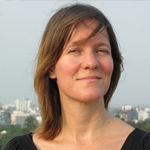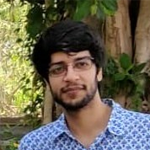In 2021, BBC Media Action conducted a landscaping study of digital literacy interventions in India to identify which approaches showed the most promise, which hadn’t worked and why, and gaps in evidence. Among the findings, the study identified that most digital literacy interventions in India had limited impact on the gender digital divide at scale because they:
- Focused on skills training without addressing the gap in women’s access to phones – so after receiving training, many women had no opportunities to practice.
- Were gender blind in design, with little focus on gender-based constraints, inequitable norms, and social dynamics.
Building on these learnings, in 2022, BBC Media Action applied its proven Human Centred Design methodologies to design and test approaches to accelerating women’s digital adoption with Self Help Groups (SHGs) in India and community partners Chaitanya WISE and PRADAN with the support of the Bill & Melinda Gates Foundation. In India, women are 41% less likely than men to use mobile internet, missing out on the substantial benefits that being connected can provide. With more than 82 million women members, SHGs provide a significant opportunity to reach women at scale.
Called Phone Toh Uthao! (‘Pick up the phone’), the 12-month human centred design project created and tested digital materials for ‘peer change agents’ to play video and audio learning content to women in structured learning sessions in existing SHG meetings as a trigger for discussion, demonstrations and group practice.
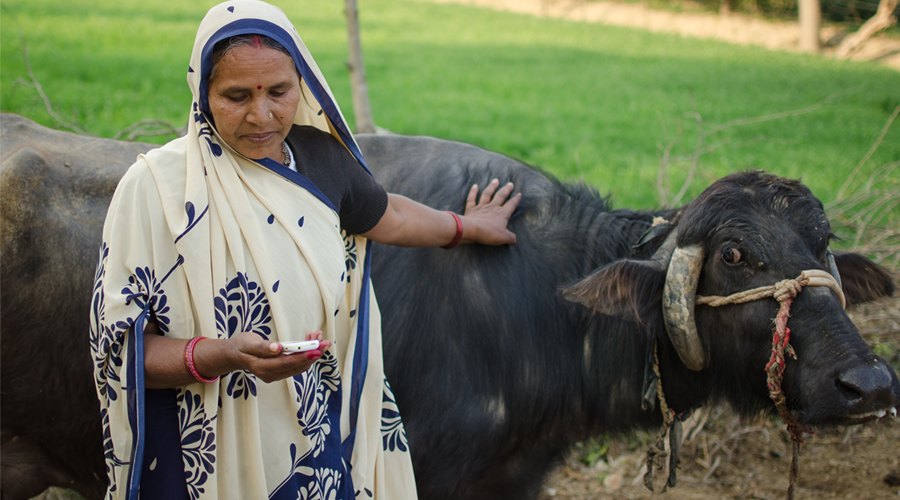
Here we share our key learnings on optimising the delivery of digital skills training for women in SHGs in India:
1. Complement skills training with social and behaviour change communication to reduce normative barriers to women’s digital adoption
Phone Toh Uthao! works to establish the value proposition for women’s use and ownership of mobile phones, countering arguments that women don’t need mobile phones (especially smartphones) – that they’re a waste of women’s time – and perceptions of the internet as inappropriate for ‘respectable’ women and girls.
2. Work with relatable female role models to build women’s confidence and overcome mobility and comprehension challenges
Female peer-change agents, known as Mobile Sakhis, were recruited by the SHG federations from among early-adopters of digital technology in the SHGs. As such, these trusted individuals were able to deliver training in women’s homes and familiar spaces. They were paid in line with the well-established ‘Community Resource Person’ model. As women from the community, Mobile Sakhis are relatable role models, able to provide relevant, accessible guidance and support that helped build SHG members’ confidence in their ability to learn. They were also able to translate the digital Hindi SBCC content into local dialects when required, contextualising it for diverse communities.
3. Identify use cases that women find meaningful, and husbands support to establish the value proposition for women’s use and ownership of mobile phones
During the design process, BBC Media Action conducted in-depth interviews with women who were early-adopters of mobile phones in SHGs to understand their journeys to digital adoption, and what they considered ‘meaningful’ use of mobile phones. Simultaneously, interviews were conducted with the husbands of SHG members and ‘gatekeepers’ in the community, to understand whether these use cases were socially justifiable and would trigger support within households. Activities that enhanced livelihoods, such as learning new skills on YouTube, and using WhatsApp to communicate with suppliers and clients, were considered the most compelling digital use cases across both groups. This resonates with similar digital skills research conducted by the GSMA in India.
4. Design and iteratively test fictional role models to humanise digital learning and ensure relatability
A fictional character, ‘Khushi Didi’ (Happiness Sister), was developed to narrate case studies of women in SHGs using digital technologies for purposes they find meaningful. ‘Khushi’ was designed to be a relatable SHG member who is digitally literate and can teach other members about the benefits of using mobile phones. The HCD research revealed that while Khushi Didi was relatable to slightly better off, better educated women in urban and peri urban SHGs, she was less relatable to low literate, low-income women in rural areas. So, a second fictional character was developed, ‘Kamala Didi,’ who was an experienced farmer and agricultural trainer in the SHG federation. Women in low-literate, low-income, rural contexts reported strong identification with Kamala, demonstrating the importance of HCD, and that there is no one size fits all solution.
5. Use vocabulary that women in low-literate low-income contexts understand
Conversations around digital technology often involve English terms and require some level of pre-existing familiarity with digital concepts. When communicating with individuals who are digitally excluded, particularly with women in low-literate low-income contexts, it is important to consider their current levels of familiarity with digital terms and concepts to ensure that learning content and digital user interfaces are accessible and comprehensible to them. BBC Media Action took the approach of identifying digital terms and concepts that were already in use in communities, and conducted extensive vocabulary testing to tailor the language to meet users’ needs. For example “net” was used to mean data balance so running out of data was understood by saying “my net is over” and a voice search was better explained as “finding by speaking”. The goal of this process is not only to enable programmes to communicate with individuals, but also to provide women with the language to communicate about mobile phones with each other and their wider community.
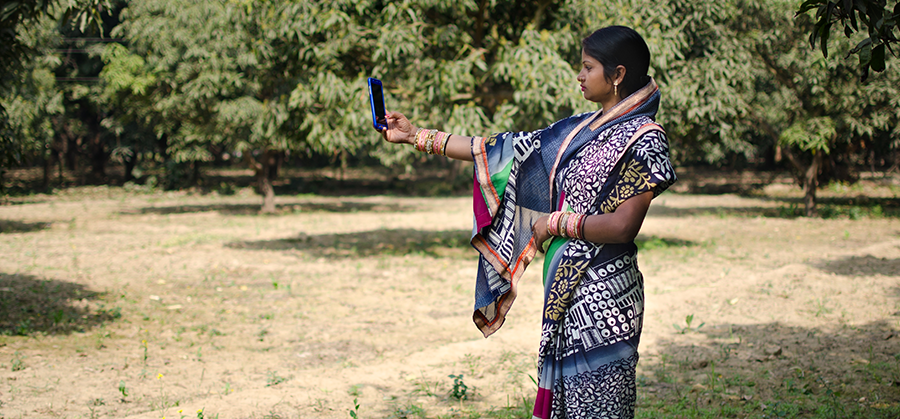
6. Design your approach to take into account women’s lower access to and ability to use technology to ensure that no one is left behind
Inclusive design begins with the choice of delivery channel. This should be selected based on the known challenges that many women face, particularly those in rural areas, including low literacy or lack of access to an internet-enabled device. The digital materials were shared via a WhatsApp chatbot and were complemented by an inbound interactive voice response service (IVR), which Mobile Sakhis could call from a feature phone or smartphone to play audio content to women in poor, rural communities, whose families couldn’t afford smartphones or data and where mobile internet connectivity was poor. Analysis revealed that the chatbot video and IVR audio content were played in almost equal amounts by Mobile Sakhis suggesting that both were important. An inclusive approach to program design can ensure that the most marginalised are not left behind.
7. Improve accessibility by user testing digital interfaces
The digital materials were designed through several rounds of usability testing with Mobile Sakhis to ensure that the WhatsApp chatbot and IVR were easy to understand and navigate. BBC Media Action found that the most successful approach to navigation was simple, linear chatbot conversation flows and IVR call flows (rather than conversation trees), that visual and audio communication should be prioritised over text, and that quick-response buttons and graphical menus were much easier for users than text inputs.
8. It’s critical to address privacy and data protection concerns
The social and behaviour change communication content included modules on digital safety best practices, developed in response to research that identified safety concerns as a key barrier to women’s digital adoption. These included raising awareness about the risks of fraud – both online and via simple phone calls, and the need to keep personal data private. However, the word “data” in this context was not understood, so we learned not to use this word, but instead to concisely request permission for specific uses. For example, a request for consent to collect and use information, and explain why, in simple short language, rather than a blanket request to accept lengthy “terms and conditions” upfront. The GSMA Mobile Internet Skills Training Toolkit (MISTT) also provides further resources for online safety and avoiding scams online.
This blog is a summary of the GSMA and BBC Media Action webinar on Tackling social norms to reduce the gender digital divide.
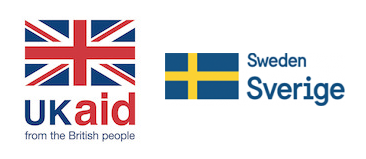
The Connected Women programme is funded by the UK Foreign, Commonwealth & Development Office (FCDO) and the Swedish International Development Cooperation Agency (SIDA), and is supported by the GSMA and its members.


